Indy Food Links
Connecting Communities to Food Resources
A comprehensive two-semester capstone project creating an innovative community organization to address food access challenges in Marion County, Indiana.
Tools Used
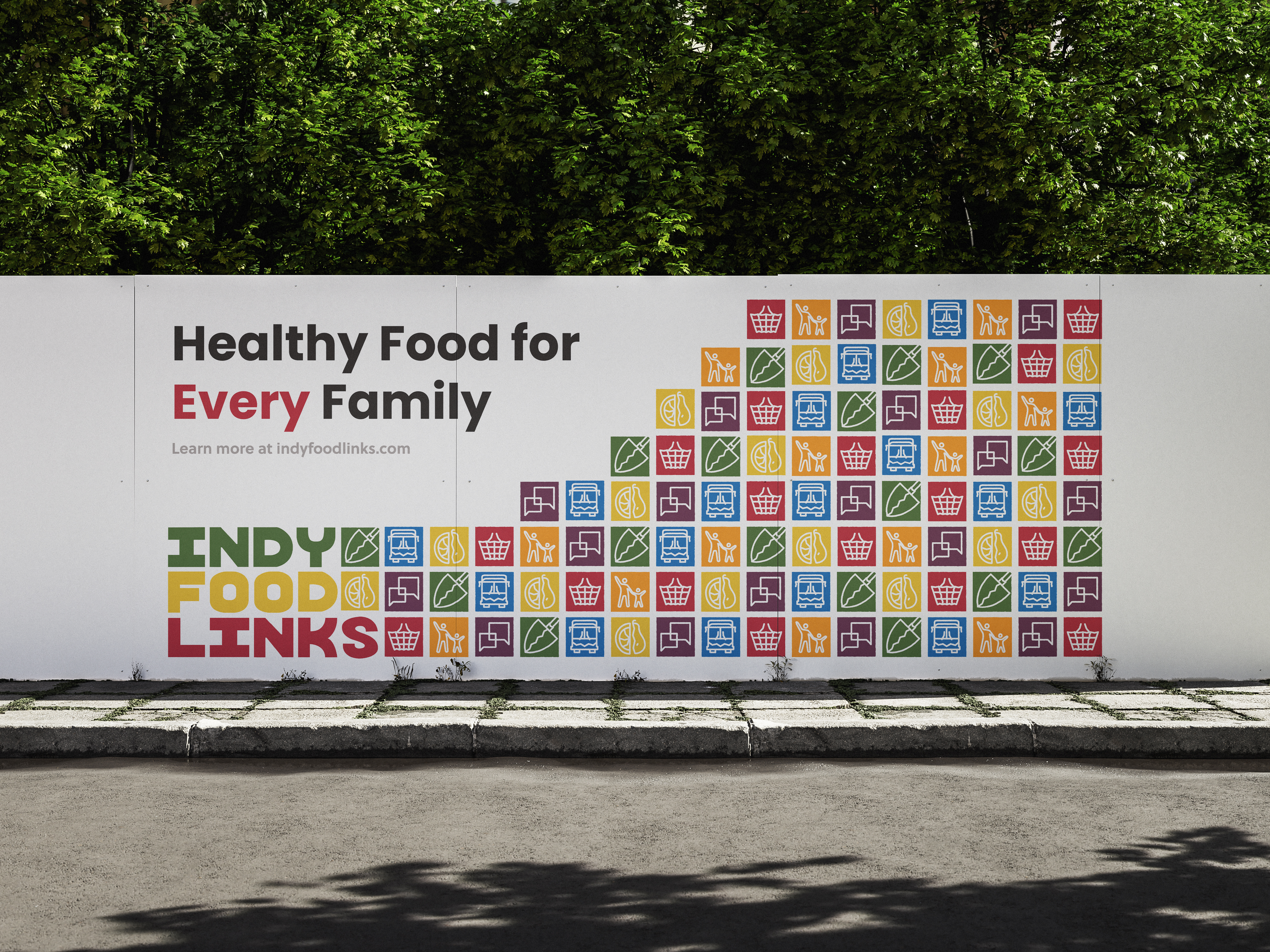
The Challenge
Marion County faces significant obstacles in food access, including transportation barriers, communication gaps, limited accessibility, and inadequate support systems for families experiencing food insecurity.
The Solution
Indy Food Links: a community organization designed to foster connections, distribute resources, and assist families through comprehensive support systems that address root causes of food insecurity.
Research & Problem Analysis
Problem Statement
Many low-income families living in food deserts encounter numerous barriers that make it challenging to access essential resources when food becomes scarce. The solution needs to address issues with transportation, accessibility, communication, and access to support systems.
"Food insecurity means lacking consistent access to enough nutritious food for a healthy life."Indiana University research on food insecurity
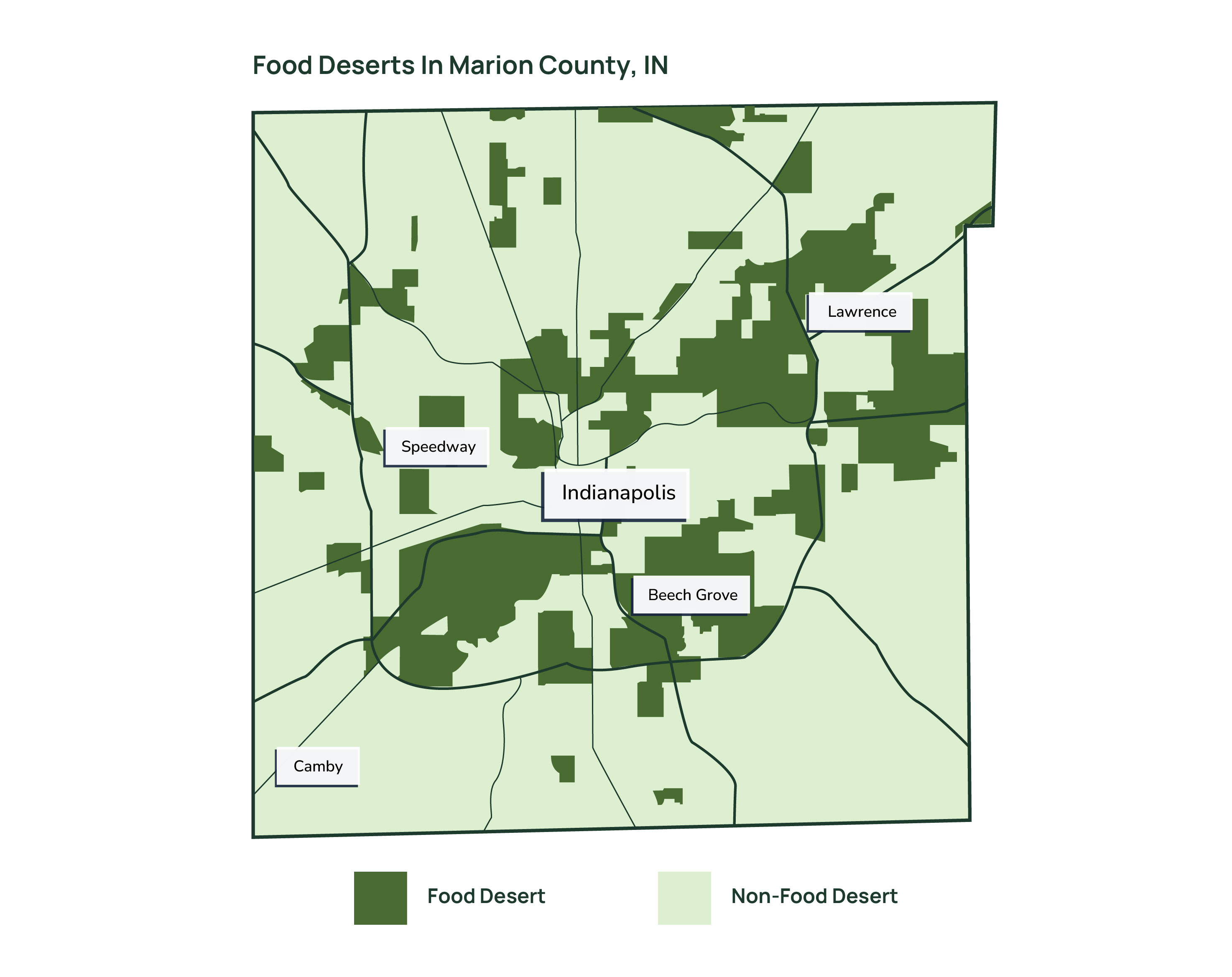
Food Desert Mapping
Using data from SAVI's Food Deserts in Indiana research, I created this visual map to illustrate areas of Marion County where residents face significant barriers to accessing fresh, nutritious food. The map helped identify key challenges and informed the design strategy for Indy Food Links.
Source: SAVI, Food Deserts in Indiana
Brand Identity System
Logo Identity
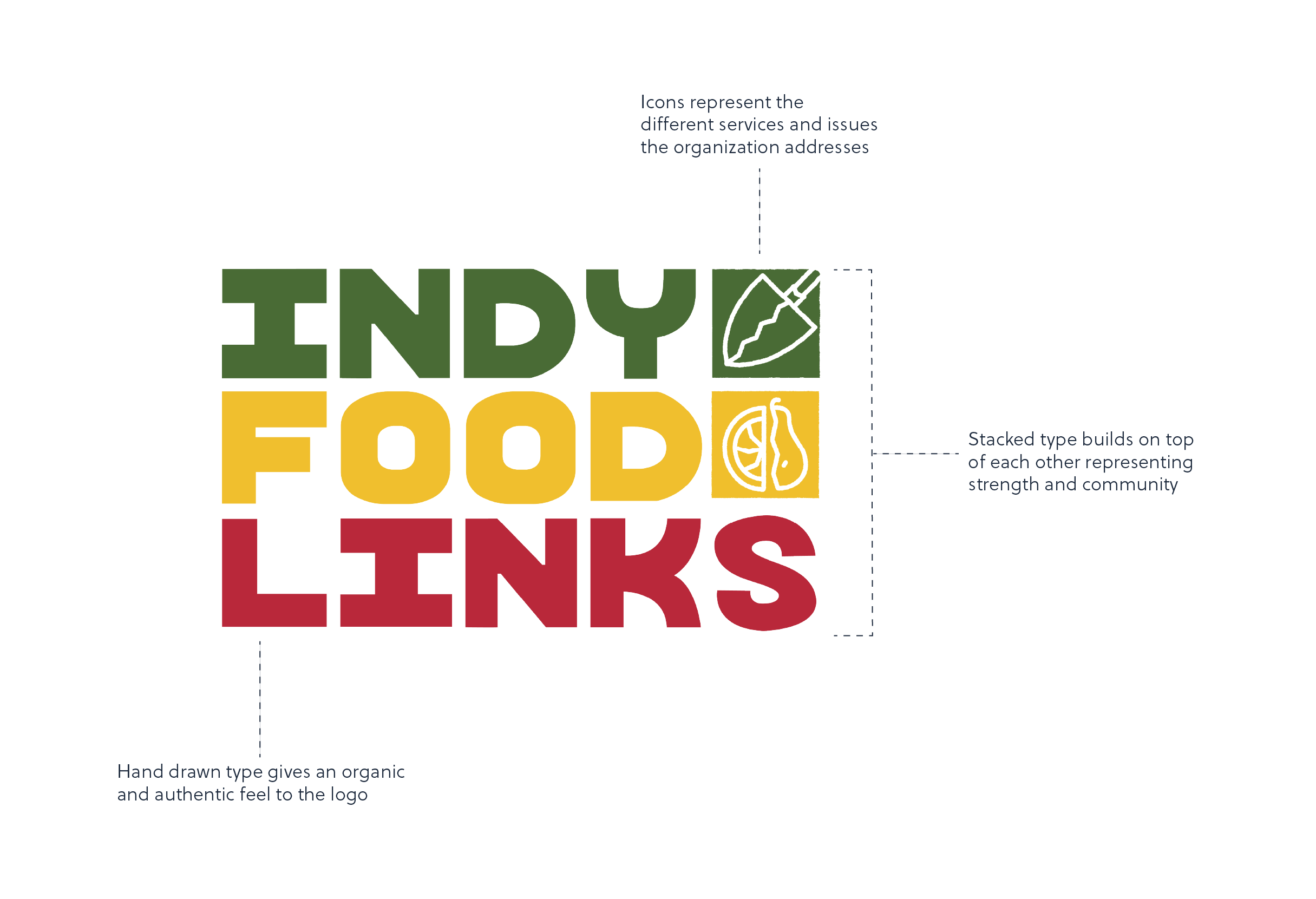
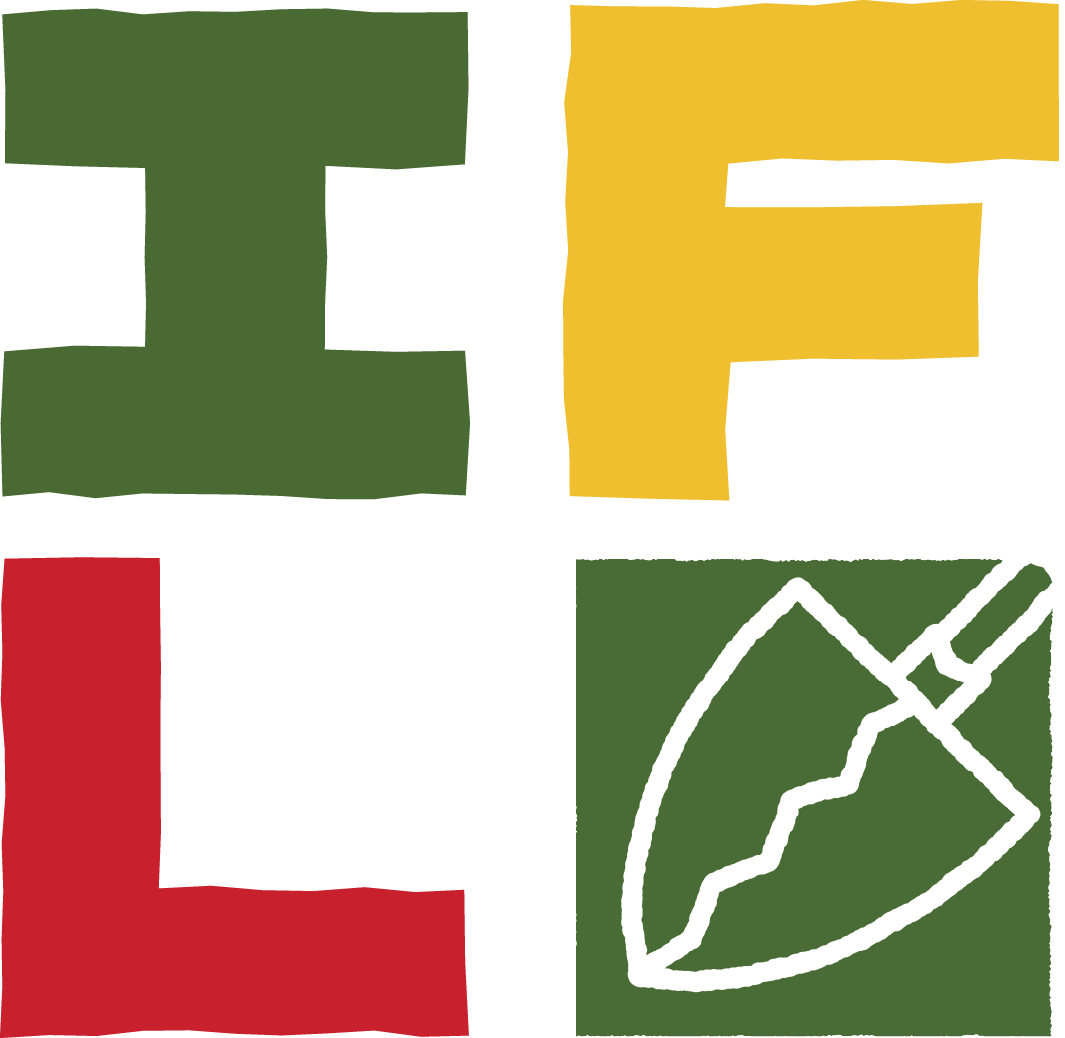
Logomark
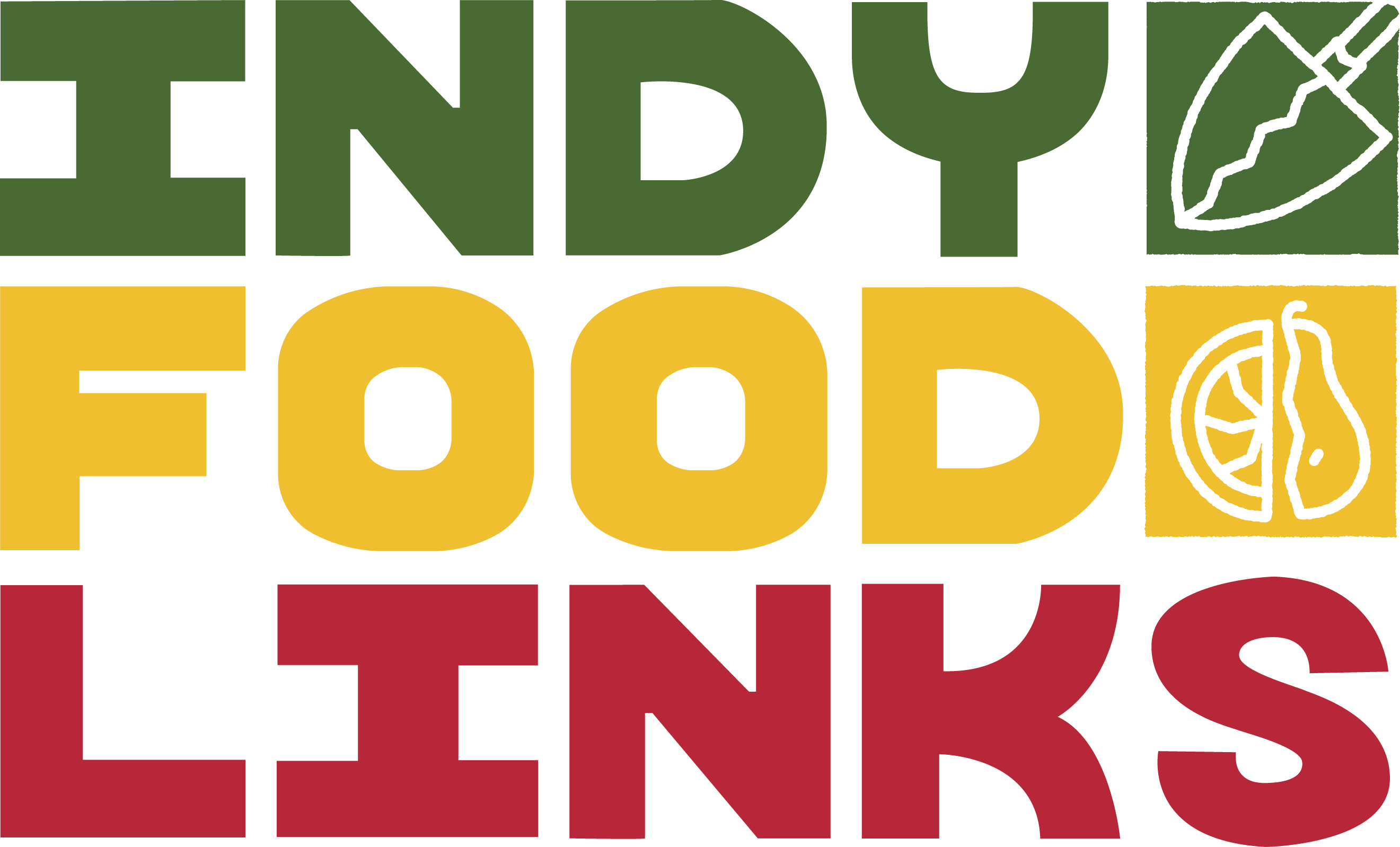
Horizontal Logo
Reversed Logo
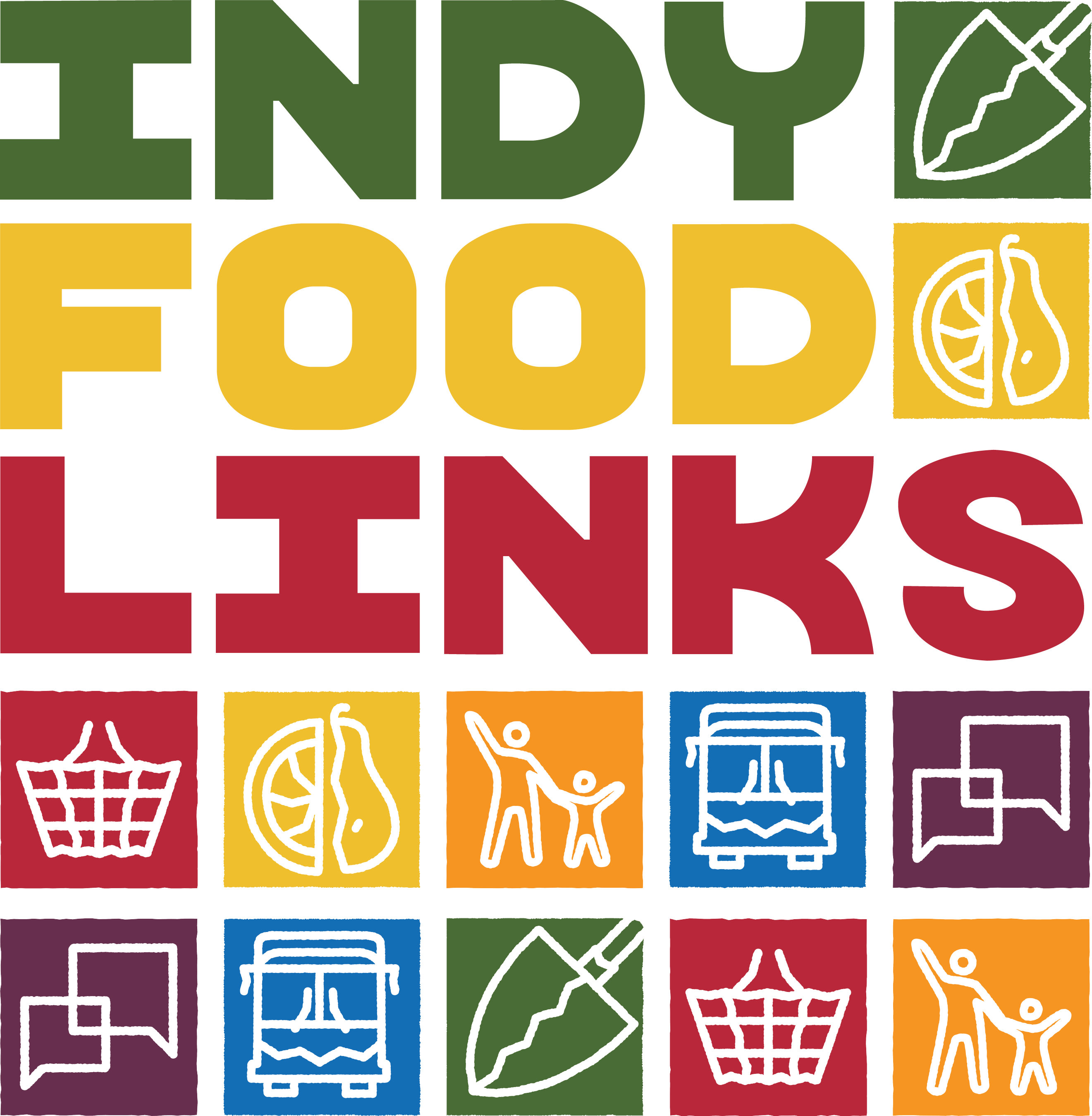
Stacked Logo
Color Palette
Basil
#496B32
Sunburst
#F0BE1B
Cranberry
#B82638
Indy Sky
#0D6BBA
Mulberry
#5F0F40
Marigold
#F7931E
The rainbow palette reflects the diverse communities we're designing for and mirrors what a healthy, varied meal looks like. I used these colors throughout to keep the brand feeling vibrant and inclusive.
Typography
Primary Typeface
Poppins
Modern, approachable, readable - Perfect for headlines and emphasis
Secondary Typeface
Soleil
Warm, friendly, highly legible - Ideal for body text and descriptions
Website Design
A responsive website concept designed to connect families with local food resources, community events, and support systems through an intuitive, accessible interface.
Homepage
The homepage highlights upcoming events and community programs, making it easy for families to discover opportunities to connect with resources.
Fresh Links Program
A information page for the Fresh Links initiative that connects residents directly to fresh food sources in their community.
Additional Pages
Click images to view larger
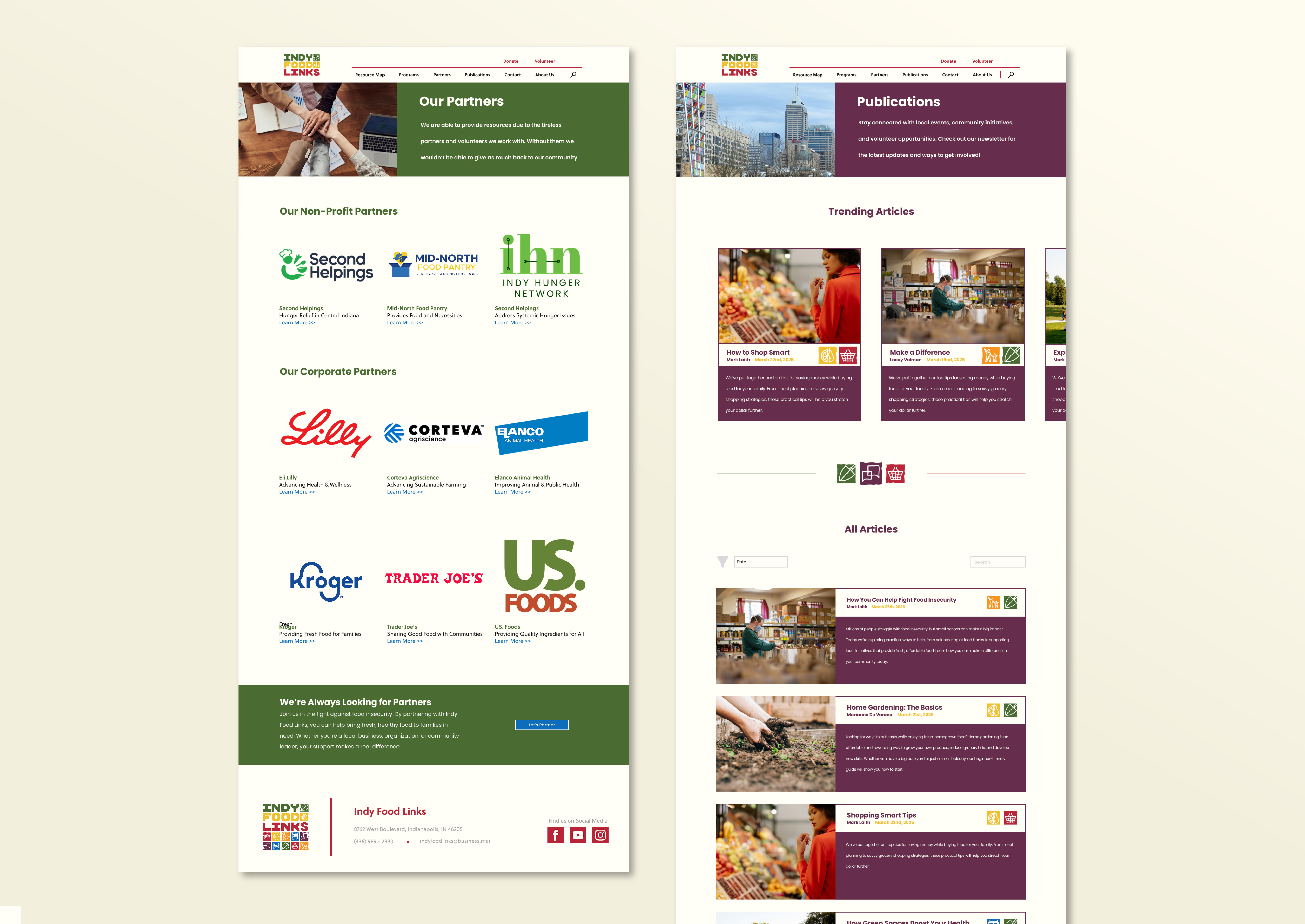
Resources & Support
Partner directory and publications from the community
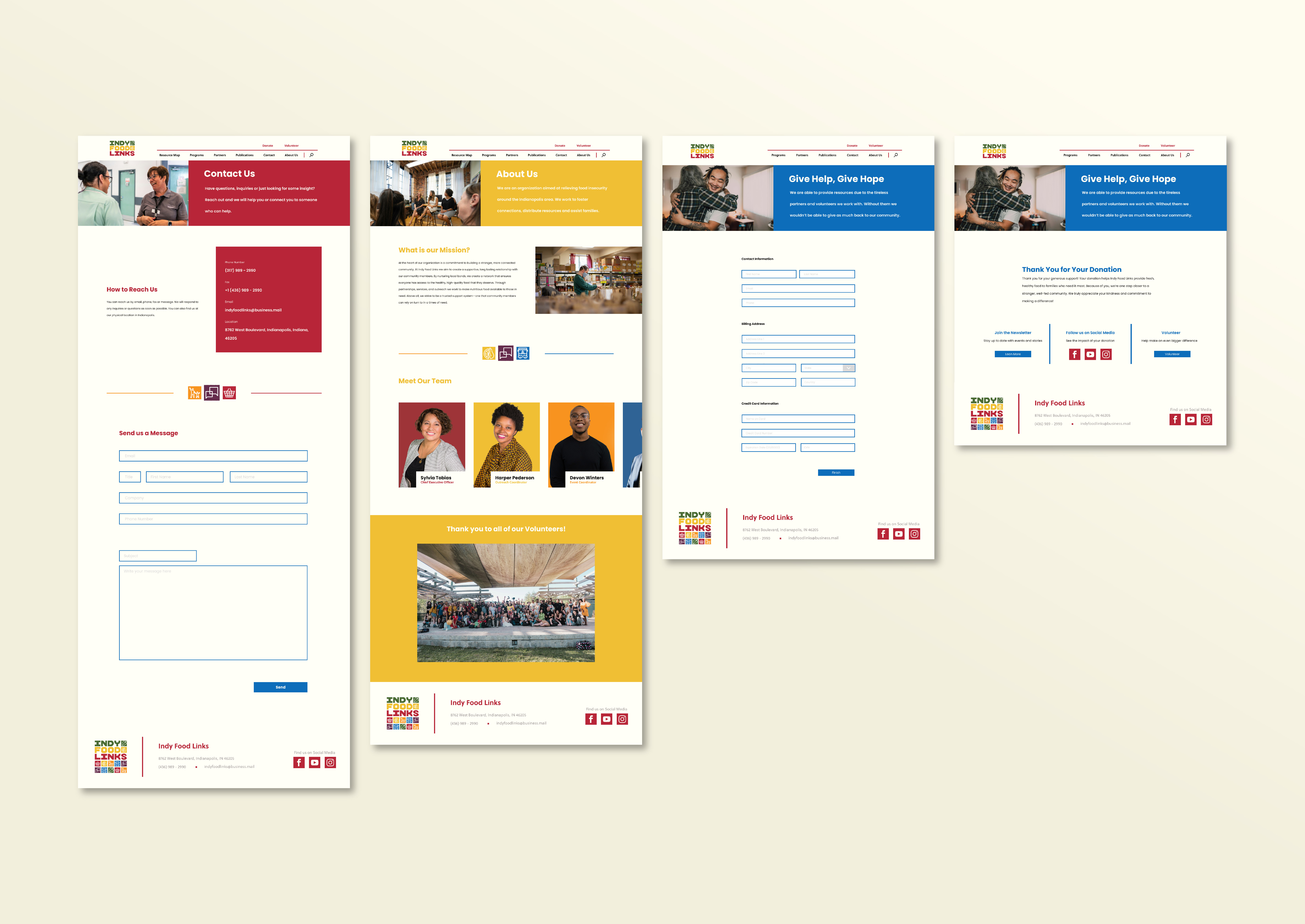
Get Involved
Contact information and ways for community members to connect and contribute
Wireframing & User Flow
Before jumping into high-fidelity design, I mapped out the site structure and user flows to ensure intuitive navigation between resources, events, and support options. These wireframes helped me think through the information architecture and plan how users would move through the site.
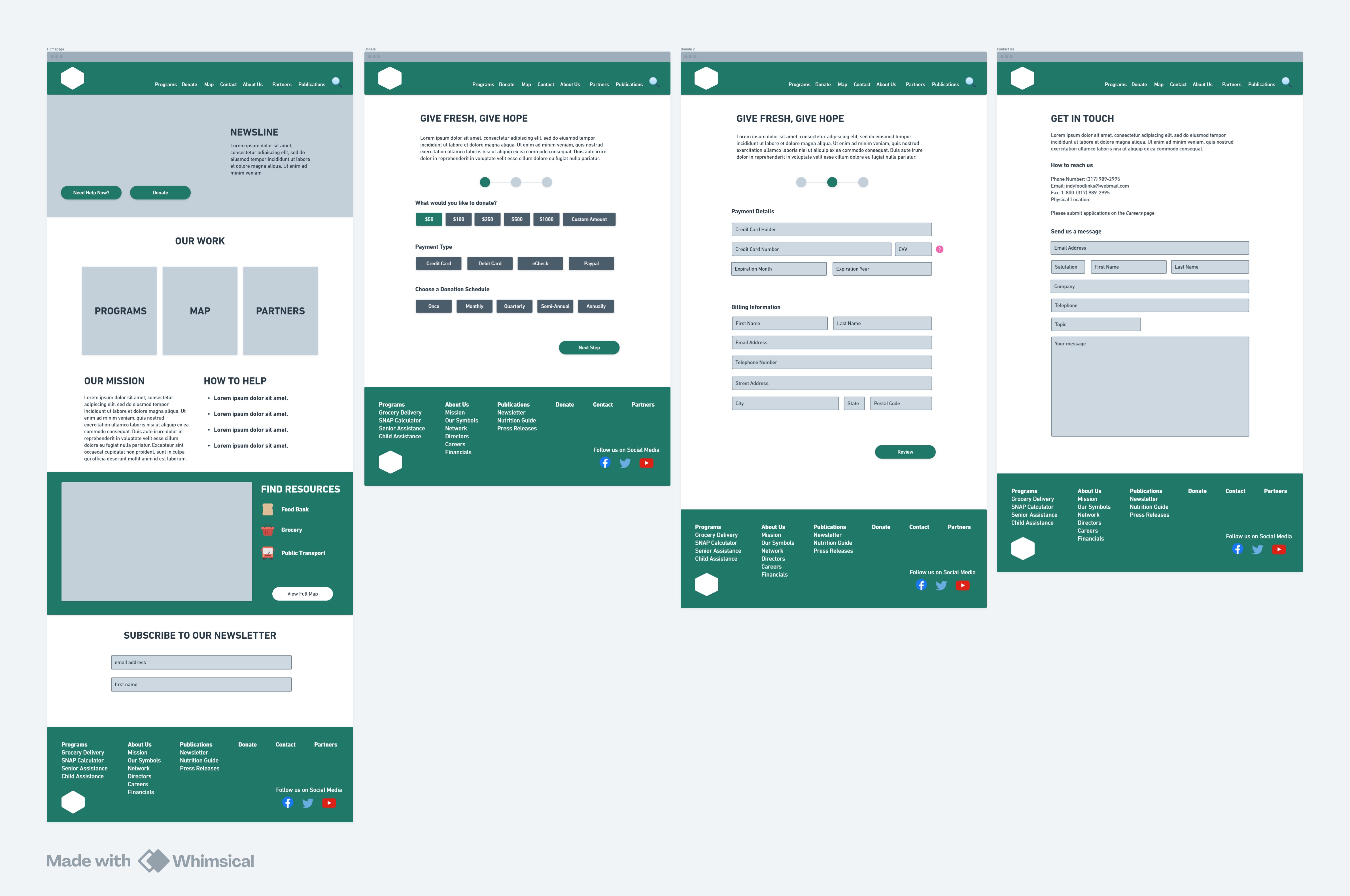
Some of the low-fidelity wireframes exploring site structure, navigation patterns, and content hierarchy
Campaign Materials
Digital Campaign Assets
Click images to view larger
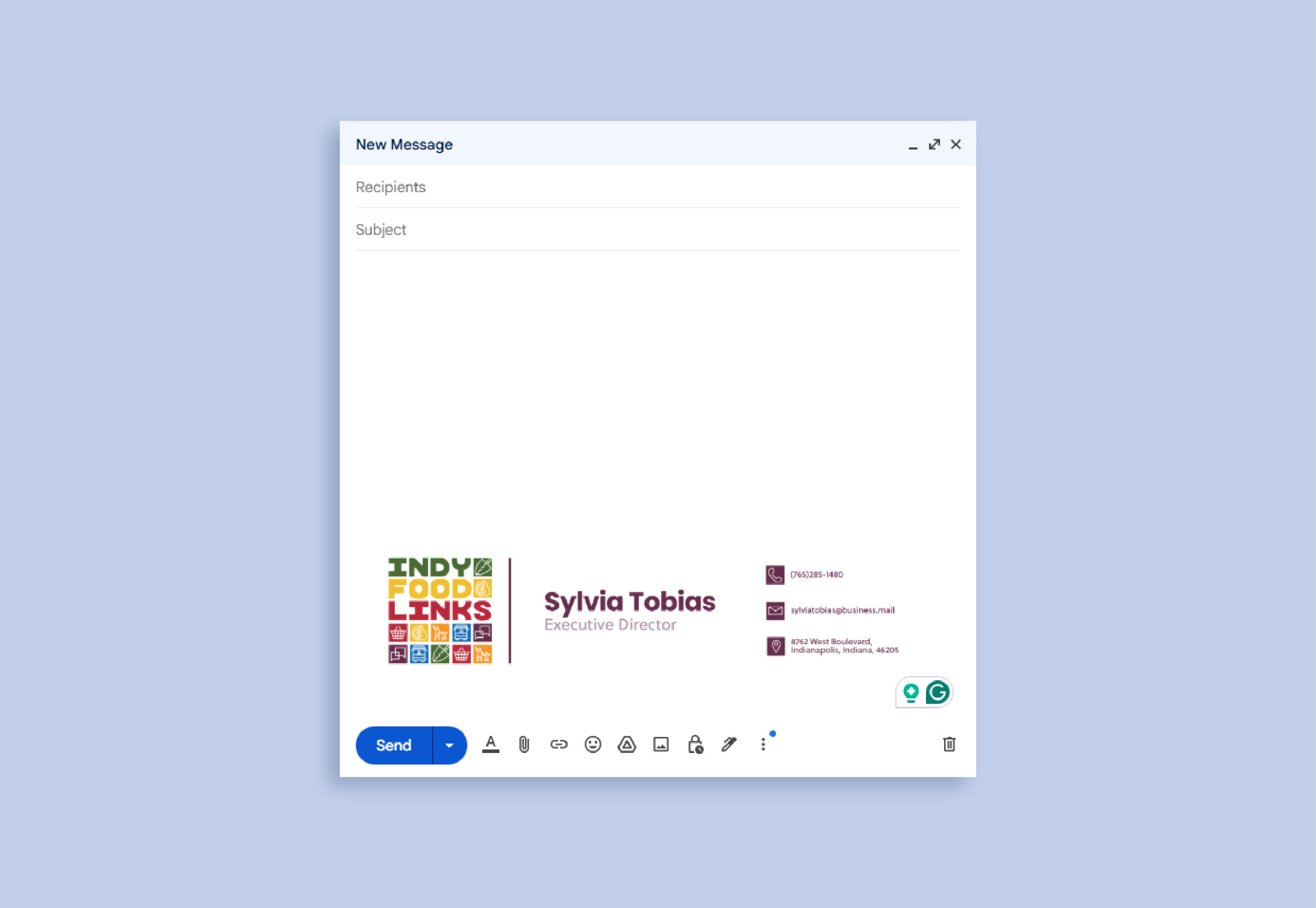
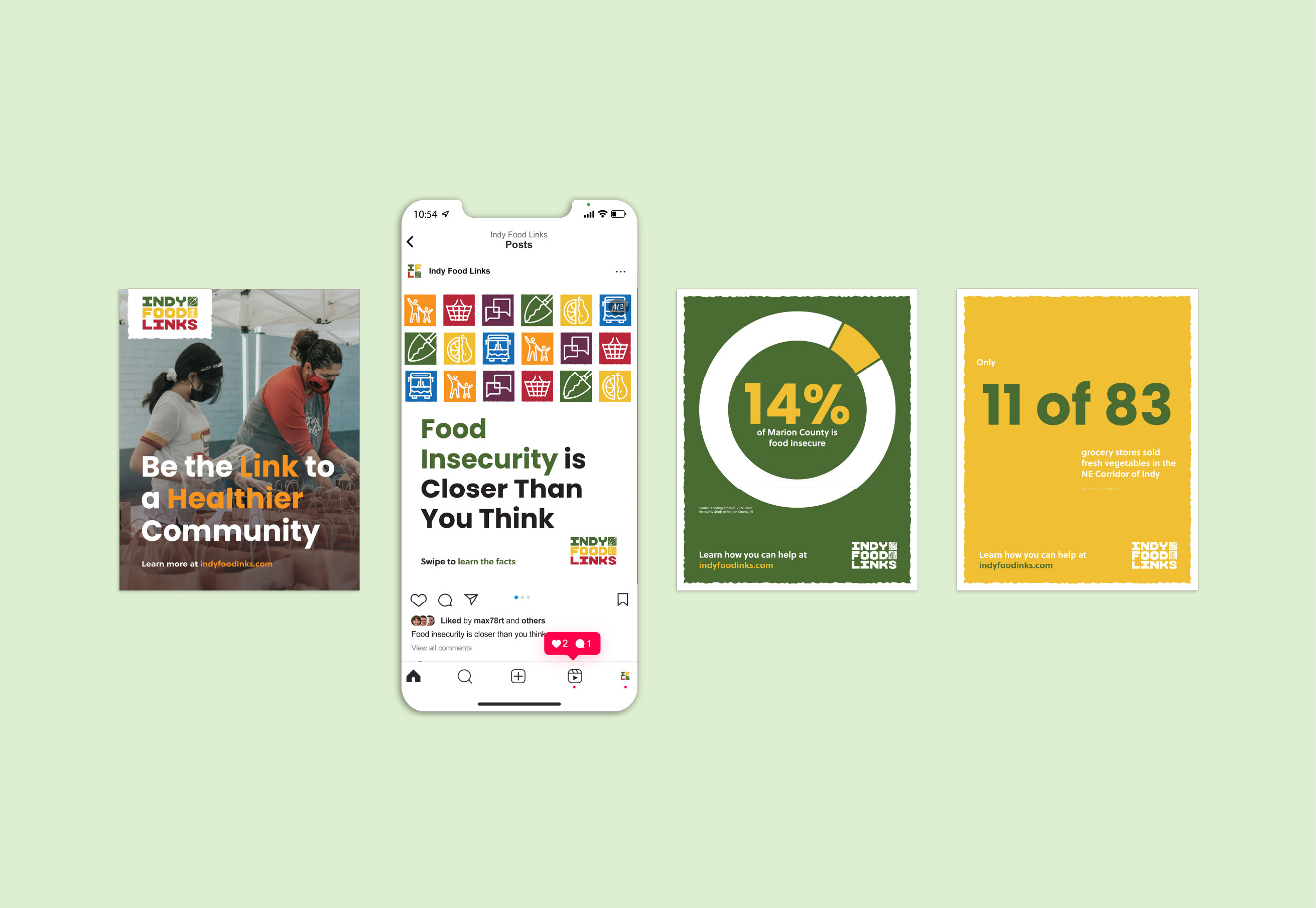
Print & Environmental Design
Click images to view larger
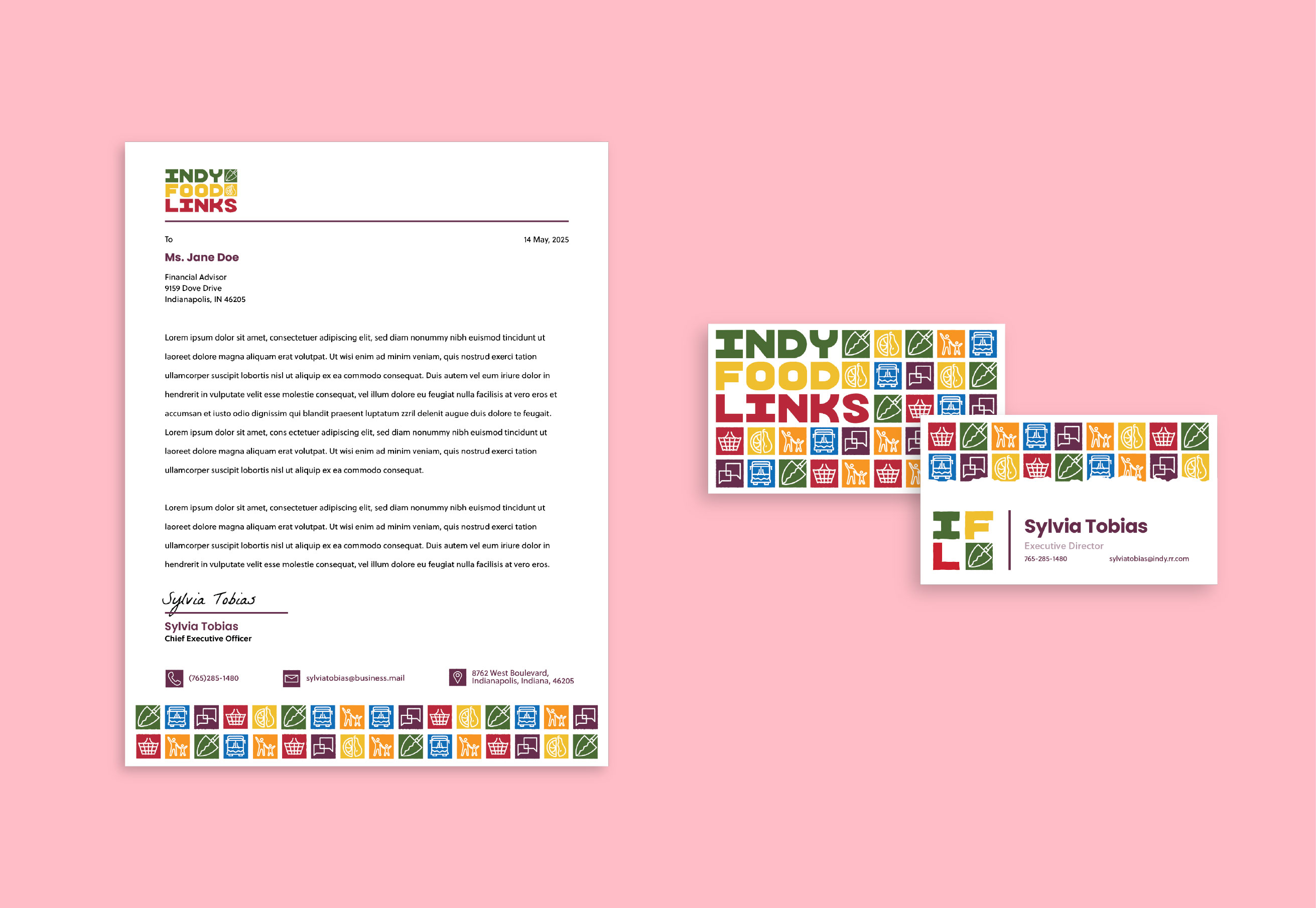
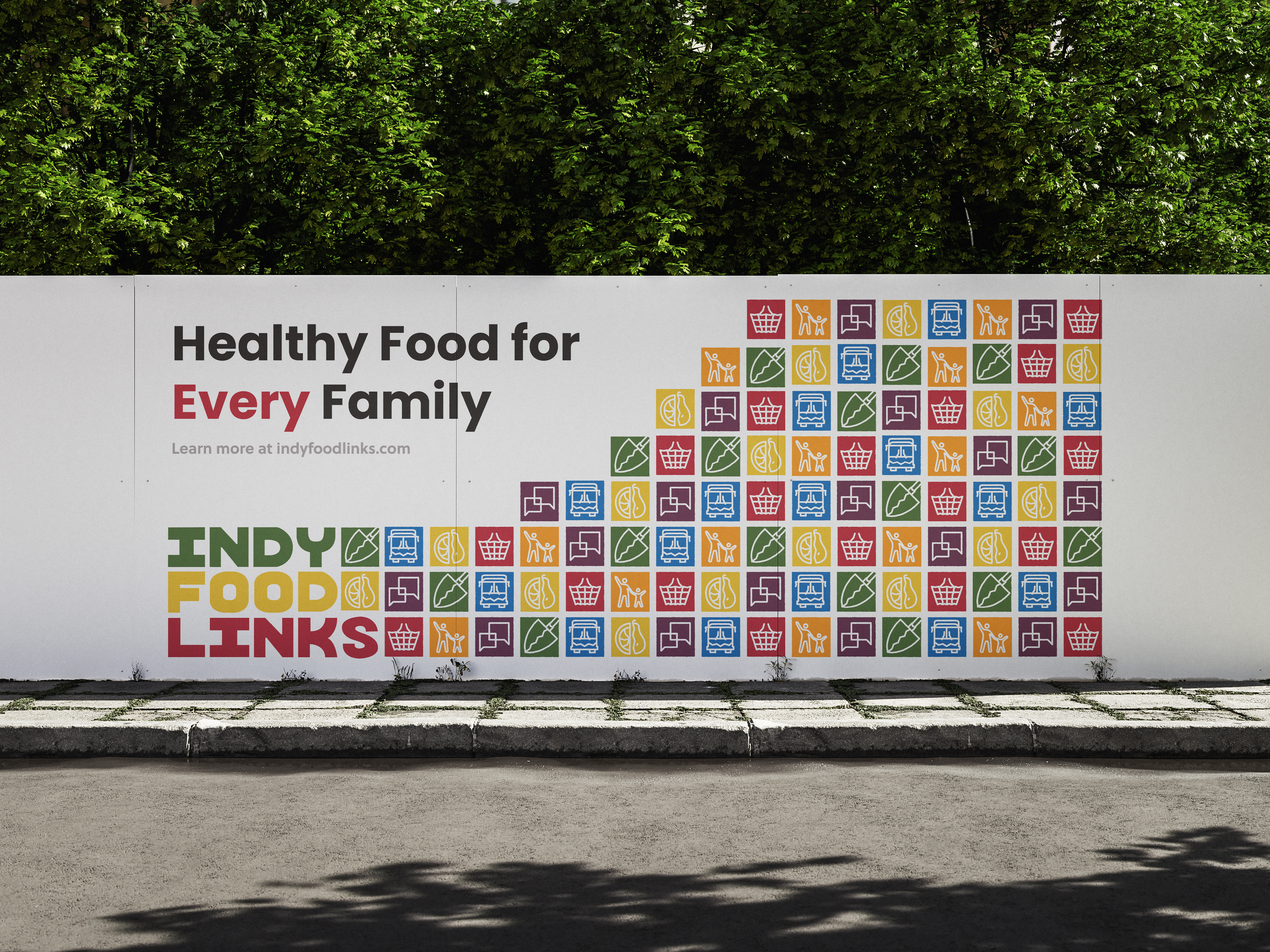
Key Takeaways
This two-semester capstone pushed me to think beyond making things that look good. I dedicated time to understanding a real community problem, researching solutions, and designing something that could actually help people. It taught me how design can be a tool for change when you take the time to really understand who you're designing for.
Designing with Purpose
Every design choice was rooted in community research rather than aesthetic preference, ensuring the solution served real user needs.
Thinking in Systems
Food insecurity is not just about access to food; it involves transportation, communication, and community support.
Using Design for Good
Design can address serious social issues when grounded in research and genuine understanding of the people being served.
Explore More Projects
Check out other projects from my portfolio
© 2025 Maddie Whitaker · Built from scratch with Next.js & Tailwind CSS
Indianapolis, IN